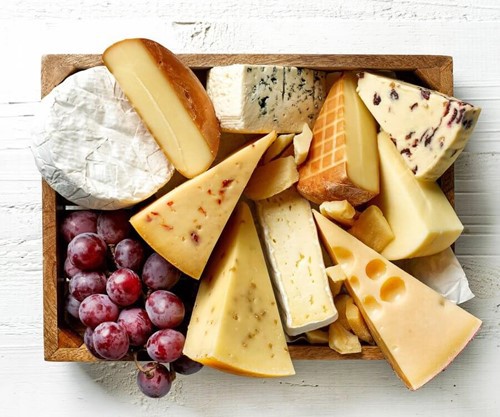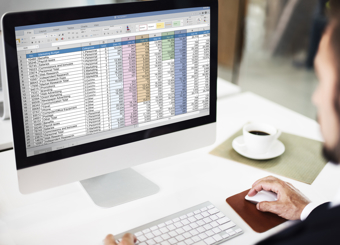How is food fraud affecting you?
Food fraud in its simplest form is the sale of bogus or counterfeit food or drink produce for a profit. This is through substituting, tampering or misrepresenting the ingredients or origins of the goods that you’re selling.
Food fraud not only causes huge financial and reputational damage to the businesses that are caught selling these counterfeits – but can cause dangerous and sometimes deadly effects for consumers.
In this blog post, we investigate why food fraud happens, the impact that it has on both the economy and consumers and what you can do to prevent it.
5 examples of food fraud
Food fraud occurs simply as a way of making a profit and is appealing to prospective fraudster’s businesses as it can be extremely difficult to detect fraudulent produce.
The most vulnerable products are expensive items that can be easily imitated whilst replacing the higher cost ingredients with cheaper alternatives. This can mean that identifying a fake product is impossible without tasting or testing the food – which can be costly for governing bodies and retailers.
In this section we take a look at the most popular forms of food fraud and which products are frequently replicated:
Olive oil
Olive oil is a popular target for food fraudsters because you can easily dilute the contents of the oil with cheaper alternatives such as rapeseed and sunflower oils.
In addition, where Olive oil is from has a drastic impact on its prices, so many manufacturers claim that their oil is from more premium olive harvesting countries such as Greece.
Cheese

Similar to olive oil, the country of origin of cheese affects the price that you can charge for it. Cheeses that are made in France and Italy cost substantially more due to the limited availability and prominent reputation.
To contextualise the scale of the level that fraudulent cheese is sold, an analyst found that a staggering 20% of the sales made within the USA’s $3billion Italian cheese market are fraudulent.
Alcohol
Booze is another popular item to fake or illegally produce and costs the UK economy £1.2billion each year. Again, this is due to the difficulty of tracing the origins of the alcohol and knowing whether it has been made legitimately without tasting or testing the product.
Premium and rare liquor is a lucrative opportunity for many alcohol producers, with an estimated £41million worth of fake Whiskey alone being present in existing sales and collections.
Seafood
Seafood fraud can come in many different forms, with the most popular being the mislabelling of the species of fish. Put simply, many fish are labelled as higher-value produce and are sold at an increased price.
Like with many meat products, seafood is also susceptible to false weight readings – in other words, fraudsters claiming that the weight of seafood being sold is higher than it is – by increasing the water consistency, breading or glazing.
Coffee

Fraudsters target the coffee industry by labelling their beans with a Fair Trade stamp when they haven’t conformed to the legislation. As consumers are becoming increasingly aware of the manipulation of coffee farmers and are willing to pay higher prices if they see that a coffee brand follows the Fair Trade guidelines.
What’s the economic impact?
Because it’s so hard to spot food fraud, and because there are no health consequences for the majority of consumers, it usually goes undetected – meaning that governments aren’t prioritising tackling this issue. However, it’s estimated that fraudulent food and drink costs the UK’s economy a staggering £12billion each year.
Additionally, the Food Standard Agency (FSA) reported that 10% of the total food and drink sold in the UK is counterfeit, adding that they’re expecting food fraud to continue growing year-on-year.
How are businesses being impacted?
As you can imagine, retailers who are caught selling tampered and bogus food and drink receive heavy scrutiny from both legal bodies, legislators and consumers – which can have catastrophic effects.
A high-profile food fraud incident was the Tesco horsemeat scandal, which generated a lot of media attention. This was caused by traces of horse meat being found in ready meals, which were labelled as beef.
The news drove Tesco’s market value down by £300million and hugely damaged their consumer reputation, as many shoppers did not trust the authenticity of their food.
In 2015 there was another case of food fraud identified which had a potentially life-threatening impact. This came after a weak cumin crop with lead producers to replace some of the contents of their cumin spice with undeclared nuts – which can have a deadly effect on people with nut allergies.
In order to protect consumers, retailers were forced to recall all of their cumin by the FSA while they ran sample tests to identify contaminated produce.
What are the risks for ordinary people?

Measuring the true cost to consumers is extremely difficult as food fraud mostly goes undetected, but there are four main problems that it causes for consumers:
Allergies
The most dangerous effect for customers is the risk of having allergic reactions to undeclared ingredients, as this can have potentially life-threatening consequences.
Religious dietary requirements
Religious dietary rules and beliefs can also be compromised by food fraud if, for example, a product is sold as halal, when the supplier hasn’t followed the correct religious procedure of preparing the animal for it to be considered halal.
Dietary requirements
Vegans, vegetarians and others who follow a strict diet are at risk of contaminating their eating habits when consuming fraudulent produce.
Organic produce
Organically sourced produce is also a target for fraudsters as many consumers are happy to pay a premium price if their food has been produced organically and ethically.
How can we tackle food fraud?
There are currently a number of solutions in place for detecting fraudulent produce, however, they are mainly used once suspicion about a products legitimacy has been raised by consumers. To find a long-term solution to fraud, more preventative identification solutions need to be produced. We’ve listed out some of the most prominent below:
1 – Improve traceability technology
The development of technologies that allows you to identify the origins of each ingredient in a product will enable retailers to pinpoint exactly where a potentially fake product has come from.
This may seem simple, but having complete traceability for some products can be difficult, for example, some pestos sold in supermarkets use ingredients supplied by upmost of 50 different suppliers. This makes it extremely difficult to record who and where each ingredient has been supplied from.
Blockchain technology may help to solve this issue. Blockchain technology records and stores data for each step of a products production journey, which will give retailers 100% transparency of where a product has come from.
2 – Labelling
Another prevention method which has been developed to reduce the level of counterfeit products for more premium products such as caviar are rigorous labelling requirements. This means that suppliers must use unique, non-reproducible and non-reusable labels on all the containers they use.
This means that if a product does not have the correct label, it’s easy for retailers to identify before they’re sold them onto consumers. Also, counterfeit producers cannot reuse the labels sold on the original bottles as they will be damaged.
3 – Rigorous sourcing
Following a strict sourcing process for all suppliers will help food manufacturing detect potential problem areas before they have embedded them in their supply chain. To do this you must identify what processes and regulations a supplier follows in-order to maintain the authenticity of their produce.
Sourcing platforms like web3 make this easy and consistent, by providing a mainly automated qualification procedure throughout their entire onboarding process.
If you’d like to learn more about how web3 can help to remove food fraud from your supply chain, click here to get in touch today. Or if you have any experiences with counterfeit food or drink, we let us know on Twitter and LinkedIn.





